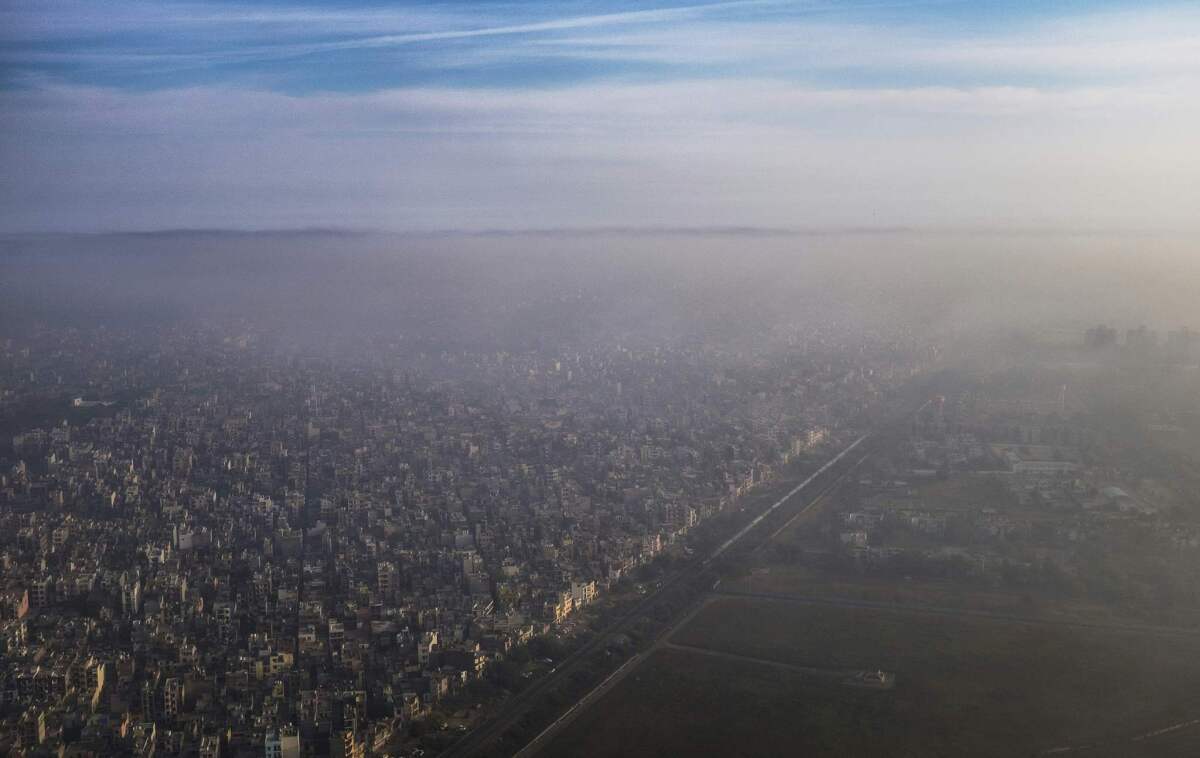22 of the world’s most polluted cities are in India

- Share via
Reporting from Mumbai, India — New statistics released Thursday underscored what many visitors to India already know: This country has the most polluted cities in the world.
Of the 50 urban areas with the worst ambient air pollution, 22 are in India, according to a World Health Organization database.
India’s capital, New Delhi, ranked as the most polluted mega-city in the world, and the 14th most polluted of all 3,000 cities and towns included in the ranking.
The country is also home to the second most polluted city in the world: Gwalior, in central India. It is topped only by Zabol, in Iran, which often suffers blinding dust storms.
The cities were ranked by the daily average concentration of PM2.5, particles in the air less than 2.5 micrometers in diameter, which are believed to pose the gravest health risks, because they can burrow deep in a person’s lungs. The WHO used statistics reported by governments or local agencies and included only cities where regular air quality readings were available.
Zabol had an average daily PM2.5 reading of 217; Gwalior’s was 176. The landlocked Indian cities of Allabahad, Patna, Raipur and Ludhiana all had average readings of 122 or higher.
The U.S. city with the most serious air pollution – Visalia, Calif. – had an average reading of 18, too low to even qualify as one of the 1,000 dirtiest cities.
Beijing, often associated with foul air, ranked 59th in the database.
India’s growing economy, surging use of coal and fossil fuels and lack of strong environmental regulations have contributed to a marked rise in air pollution over the last decade. Wood burning, emissions from cars and power plants, and dust kicked up by driving on unpaved roads are all sources of PM2.5 – and all of those pollutants are in abundance in India’s fast-developing cities.
A study published this month in the Geophysical Research Letters journal found that outdoor air pollution was contributing to more than half a million premature deaths each year in India and costing the economy hundreds of billions of dollars.
In 2014, New Delhi ranked worst among major cities in the WHO database. The city this year launched a pilot effort to restrict most private vehicles to driving only on alternate days, an initiative that has brought mixed results.
The central government has introduced new emissions standards for thermal power plants and vehicles. But environmental groups have raised alarm over other government policies that could worsen air pollution, including a growing reliance on coal-based energy.
“Air pollution is a national crisis, and demands a concerted national action plan in response,” Sunil Dahiya, a campaigner for Greenpeace India, said in a statement.
Although cities in India, China, Saudi Arabia and other developing countries fared worst on the list, the WHO found that more than half the people in cities it surveyed were living with PM2.5 levels that were 2.5 times or more higher than U.N. guidelines recommend. Only about 16% of the total urban population it surveyed lived in places where the air quality met U.N. standards.
More to Read
Sign up for Essential California
The most important California stories and recommendations in your inbox every morning.
You may occasionally receive promotional content from the Los Angeles Times.











